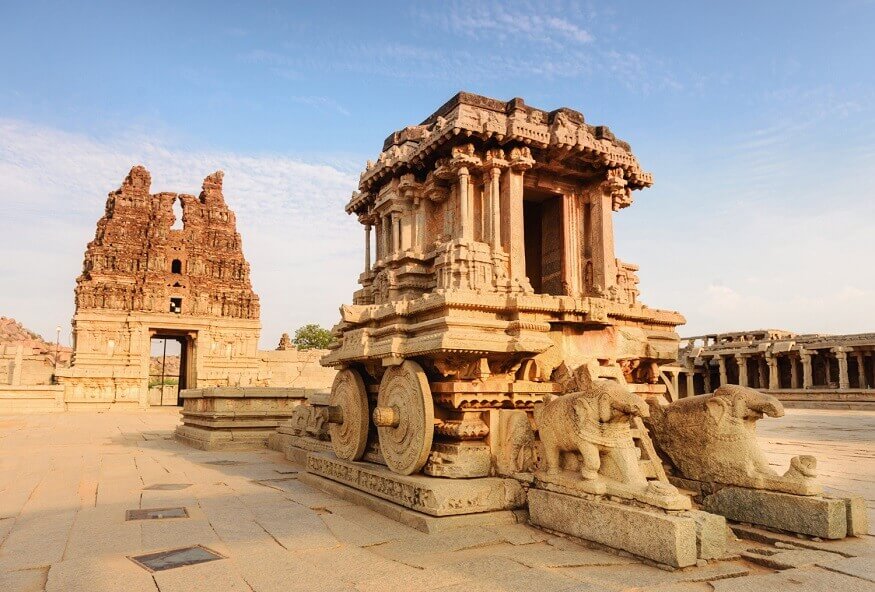From ancient temples and majestic forts to intricately carved caves and mysterious ruins, India holds a treasure trove of archaeological sites. Each site stands as testimony to the civilizations that once thrived in the region. In this blog, we will explore the top 10 archaeological sites around India.
Also Read: The Bronze Age Era and its Empire
- Hampi, Karnataka
- Lothal, Ahmedabad, Gujarat
- Harappa and Mohenjo Daro
- Nalanda
Situated in the northern part of Karnataka, Hampi allows you to witness a city magnificently carved out of rocks. The monuments at Hampi have been designated a UNESCO World Heritage site. Numerous archaeologists and historians throng to Hampi to study and admire the fine architecture of the Vijayanagara Empire.
The city’s archaeological sites are distinguished by their distinct Dravidian architecture, blending Hindu and Islamic influences. Hampi’s architectural marvels range from grand temples, regal structures, ancient markets, royal enclosures, and fort remains. Among the remains are those of the Vitthala Temple, notably the iconic stone chariot, and the Virupaksha Temple, which continues to be a celebrated pilgrimage site.
Archaeological projects conducted by the Archaeological Survey of India (ASI) have unearthed intricately carved sculptures, inscriptions, coins, and artefacts, confirming Hampi’s prominence in craft, commerce, and religion during the Vijayanagara period.
Lothal is one of India’s most important archaeological sites, situated near the village of Saragwala in the Dholka Taluka, Gujarat. Believed to have been one of the most prominent cities of the ancient Indus Valley Civilisation, Lothal bears a significant testament to the heritage and culture of ancient India. This valuable historical site, spanning approximately half a kilometre square, dates back to around 2400-1900 BC, standing as proof of India’s ancient civilization.
Lothal is known for its comprehensive town planning, which rivals even modern-day city layouts. The city had been divided into two main parts, an upper town ‘Citadel’ and a lower town. The Citadel housed important buildings like the ruler’s residence, the treasury, and the storage facilities. The lower town was the residential area, where the city’s craftsmen, traders, artisans, farmers, and labourers resided.
Known explicitly as the two most important cities of the Indus Valley Civilization, they are located in present-day Pakistan. Discoveries from these sites have unveiled a lot about the lifestyles of people in the civilization, dating back to 3300–1300 BCE. Intricately designed terracotta figures, seals, stone tools, and pottery uncovered from Harappa reveal artistic excellence and technological advancements.
Mohenjodaro, translating to ‘Mound of the Dead Men,’ unravelled the ability of the Harappan society to attain considerable architectural precision. The buildings were constructed with standardised, uniformly sized, kiln-baked bricks. Additionally, Mohenjodaro holds one of the world’s earliest public water tank systems – the Great Bath, a symbol of cultural and ritual practices demonstrating an advanced water management system.
Also Read: Why Is History Important and How Can It Benefit Your Future?
Initially a Buddhist monastery, it became known as the first residential university in the world. Located in Bihar, the ruins of Nalanda are classified as a UNESCO World Heritage Site.
Nalanda’s archaeology









